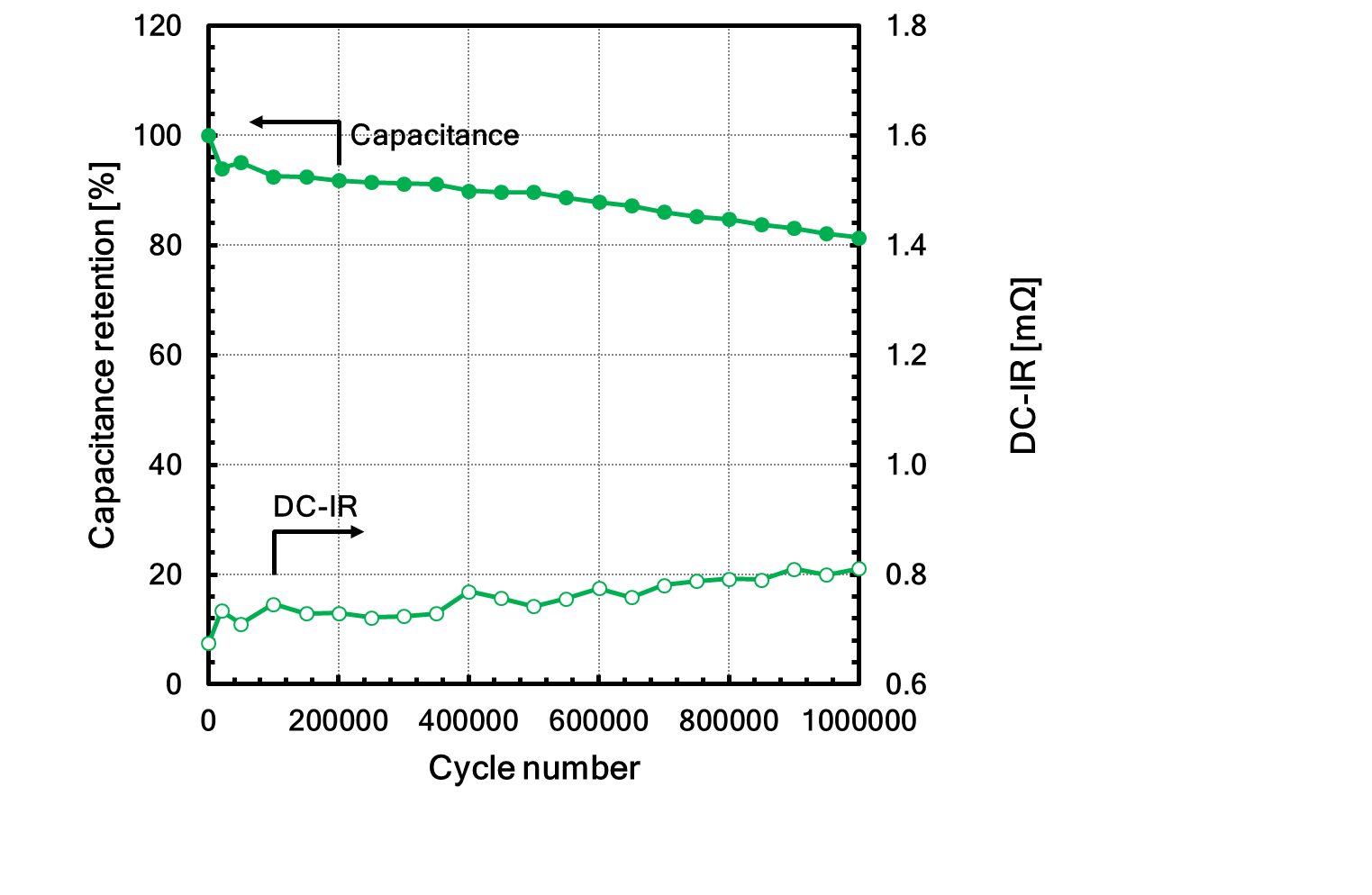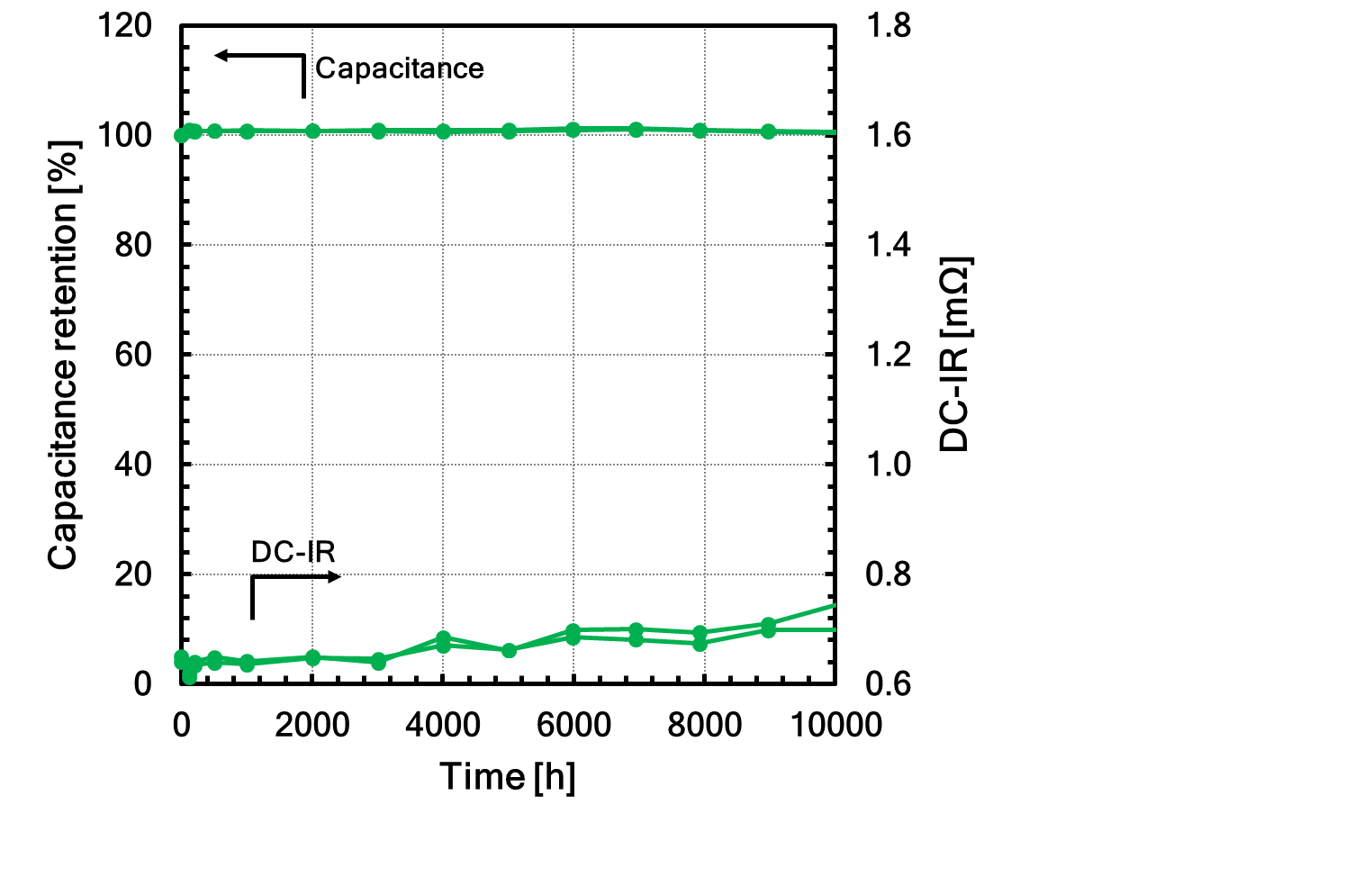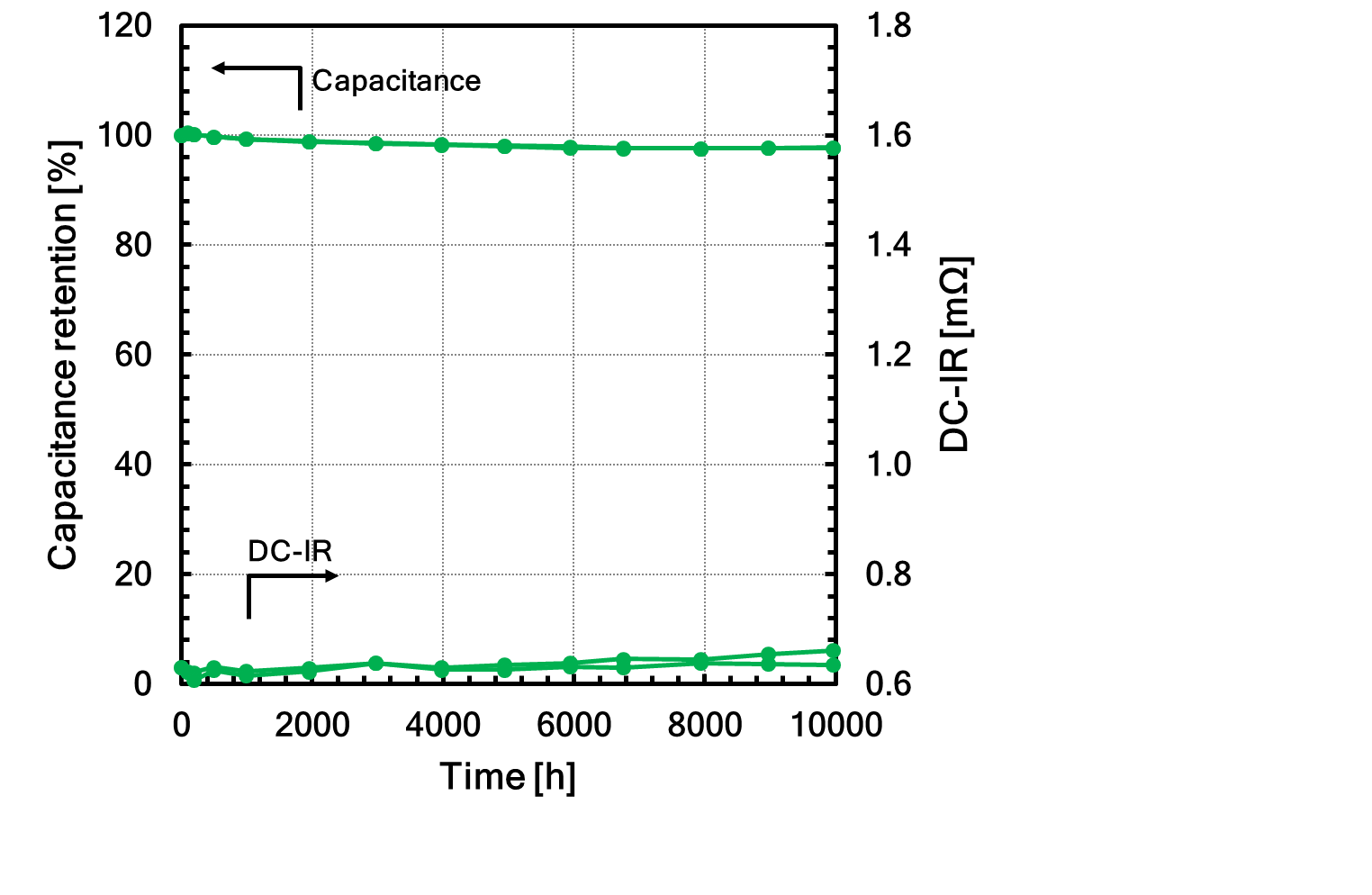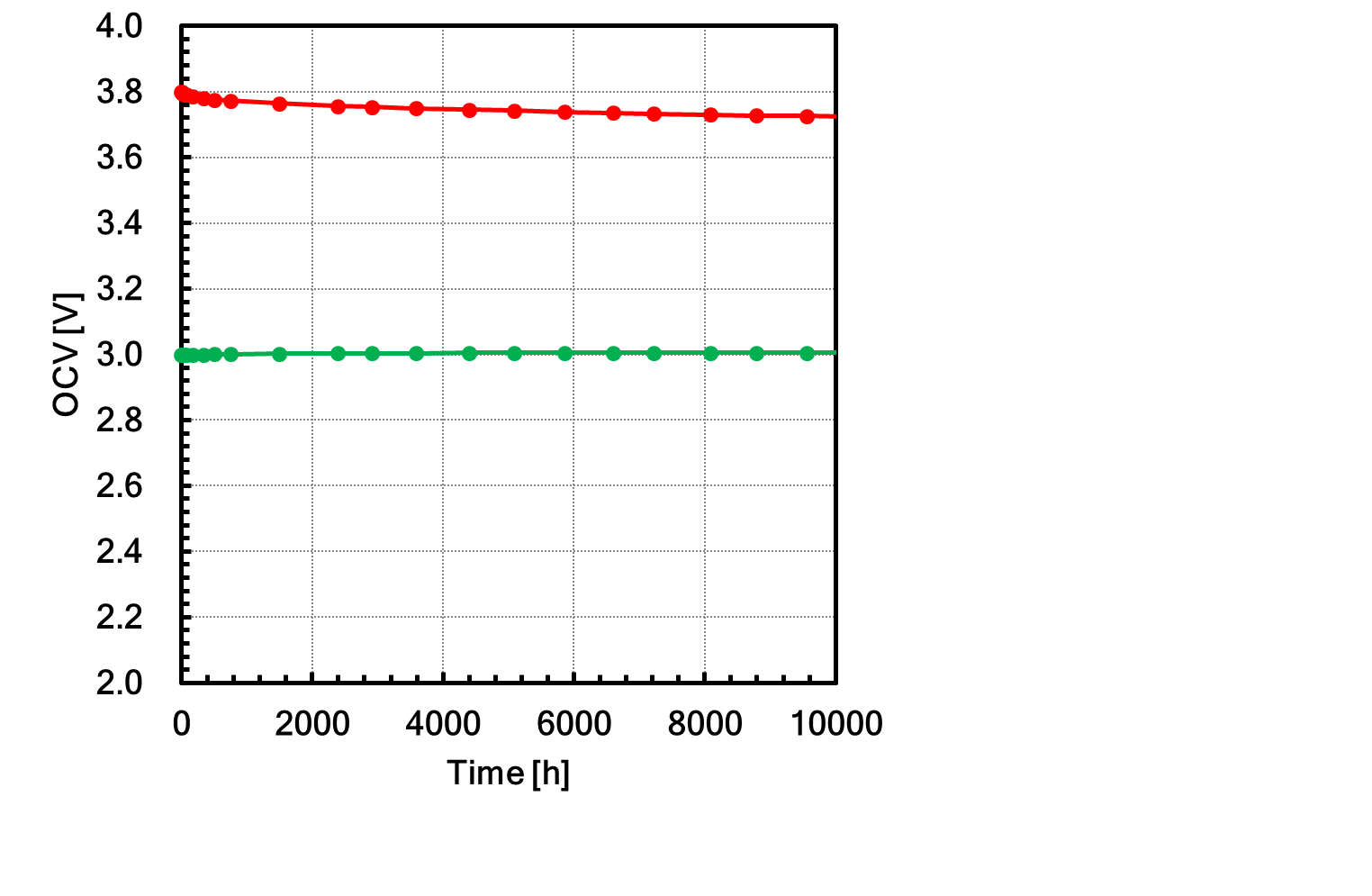Prismatic Cell Safety Test Results
No ignition or burst was observed in any of the overcharge test, overdischarge test, and external short-circuit test, demonstrating excellent safety.
| Test | Conditions | Results | |
|---|---|---|---|
| Ignition | Burst | ||
| Overcharge | Current: 200 A Charge rate: 250% Maximum voltage: 20 V Using narrow jig |
None | None |
| Over-discharge | Current: 200 A Voltage: 0 V |
None | None |
| External short circuit | Short circuit resistance: 3 mΩ Atmosphere temperature: 55℃ |
None | None |
Cycle Test Results for Prismatic Cells
Even after 1 million cycles of charging and discharging at 200A, more than 80% of capacity is maintained.

| Test cell | Prismatic 3300F |
|---|---|
| Test conditions | Charge:CC 200A, 3.8V / Discharge 200A, 2.2V / No pause/25℃ |
* The test results are observed under the respective test conditions described and do not guarantee similar results under different conditions.
Float Test Results for Prismatic Cells
No significant deterioration is seen after 10,000 hours in the 70 ° C 3.8V float test.

| Test cell | Primatic 3300F |
|---|---|
| Test conditions | Voltage:3.8V / Ambient temperature:70℃ |
* The test results are observed under the respective test conditions described and do not guarantee similar results under different conditions.
Storage Test Result for Prismatic Cells
No significant deterioration is seen even after being left in a 70 ° C environment for 10,000 hours.

| Test cell | Primatic 3300F |
|---|---|
| Test conditions | 70℃ Environment preservation |
* The test results are observed under the respective test conditions described and do not guarantee similar results under different conditions.
Self-discharge Test Result for Prismatic Cells
No significant voltage drop is seen after leaving at 3.8V and 3V for 10,000 hours.

| Test cell | Primatic 3300F |
|---|---|
| Test conditions | Voltage: 3.8V,3V / Ambient temperature: 25℃ |
* The test results are observed under the respective test conditions described and do not guarantee similar results under different conditions.
